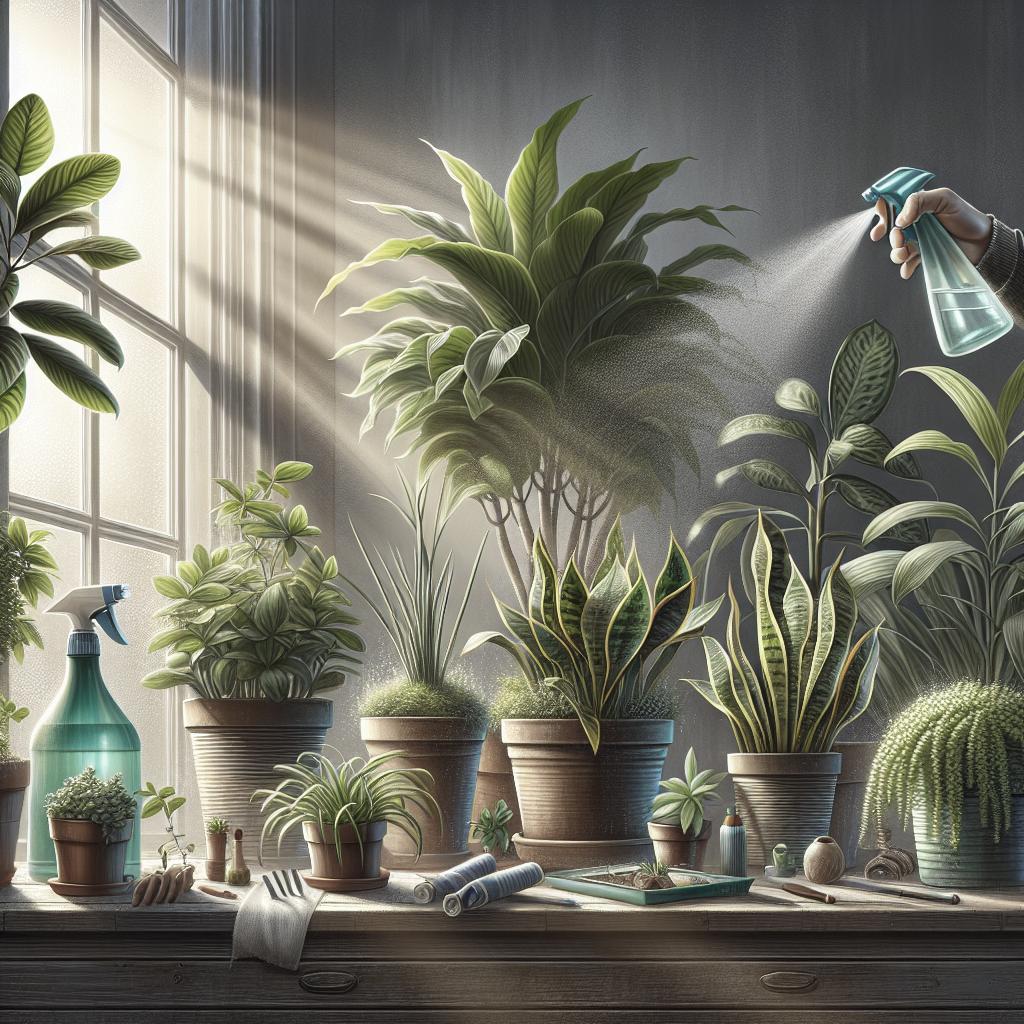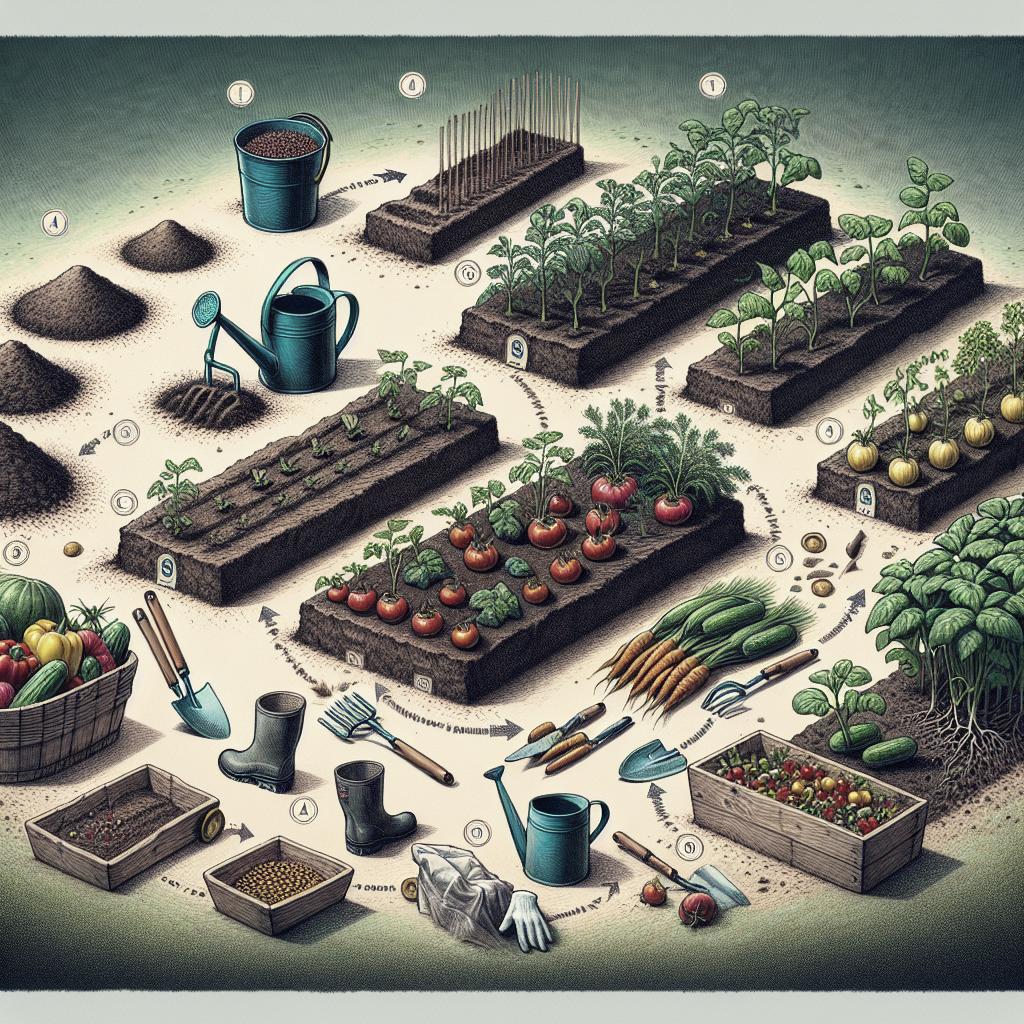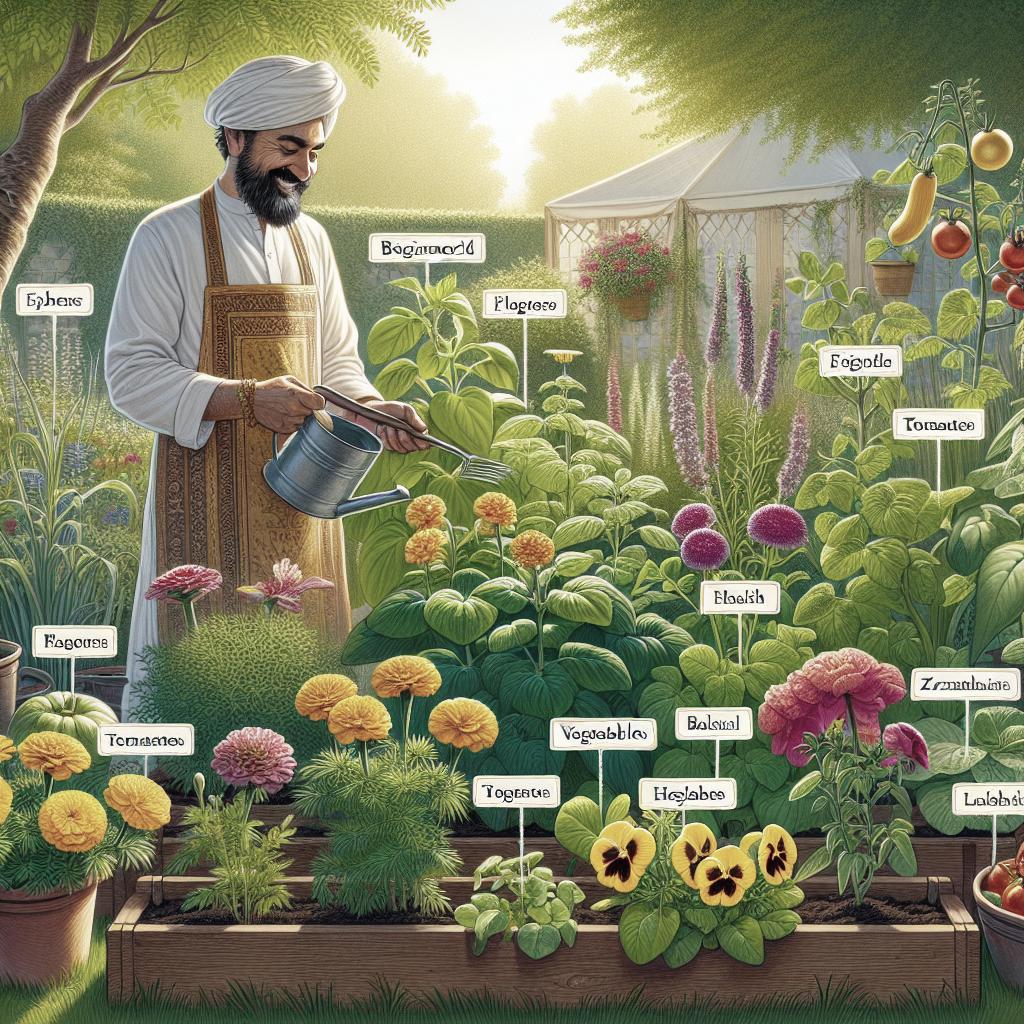“`html
How to Care for Indoor Houseplants
Indoor houseplants not only beautify our living spaces but also provide a number of health benefits, from purifying the air to boosting mood and creativity. Caring for these verdant companions goes beyond mere watering; it requires an understanding of their specific needs for optimal growth and vitality. This comprehensive guide will introduce you to essential plant care practices including soil management, watering techniques, lighting conditions, fertilization, and ensuring ideal environmental conditions. Additionally, you will discover a variety of beginner-friendly houseplants perfect for indoors. Prepare to transform your home into a lush greenery with the help of this insightful and practical guide.
Caring for Your Plants
Start with the Soil
The foundation of any healthy houseplant is the soil in which it grows. A good soil mix ensures that your plants receive adequate nutrients, water, and airflow. For many indoor plants, a soil rich in organic matter is ideal because it helps to retain moisture while also providing essential nutrients as it breaks down. It is important to choose the right type of soil based on your specific plants; succulents, for instance, require a well-draining soil mix, while ferns enjoy a more moisture-retentive blend.
Beyond choosing the right soil mix, consider repotting your plants as they grow. Repotting provides fresh nutrients and more space for root development. Typically, repotting is necessary when you notice roots extending out of the drainage holes, or if the plant becomes top-heavy. Spring and early summer are often the best times for repotting, allowing the plant ample growing time in its new environment.
On Watering
Watering is undoubtedly one of the most crucial yet misunderstood aspects of houseplant care. The frequency with which you water your plants depends on several factors including plant species, pot size, and environmental conditions such as humidity and light. Always allow the topsoil to dry out slightly before watering again to prevent overwatering, which can lead to root rot—a common issue for potted plants.
Using room-temperature, filtered water can be beneficial for houseplants sensitive to chlorine or other chemicals commonly found in tap water. Additionally, ensure your pots have drainage holes to avoid waterlogging the roots. Monitoring the moisture level of the soil is key; inserting your finger a couple of inches into the soil can help determine if it is time to water again. Remember, it is generally better to underwater than overwater.
Brighten Up!
Light is essential for plant photosynthesis, and the right amount and intensity can vary greatly from one plant species to another. Most houseplants thrive in indirect light conditions described as bright or moderate. A south or west-facing window can provide adequate light, but watch out for direct sun in peak afternoon hours that might scorch delicate leaves.
Consider rotating your plants every few weeks to ensure that all sides receive equal light exposure, which promotes even growth. For rooms with low natural light, you may want to supplement with artificial grow lights. These lights can simulate the spectrum of sunlight and are great for plants requiring stronger exposure or during the darker winter months.
Fertilizing Time
Fertilizing provides your plant with additional nutrients necessary for growth, especially during their active growing seasons—spring and summer. Depending on your plant’s needs, you can choose from organic options like compost or store-bought liquid fertilizers specially formulated for houseplants.
It is important to follow the recommendations for the type and frequency of fertilizer adequately. Over-fertilizing can lead to a buildup of salts and damage the plant’s roots. Always ensure your plant is well-watered before applying any fertilizer to avoid root burn. During the dormant winter months, most plants do not require feeding, and reducing or halting fertilization is recommended.
The Right Temperature, Good Air Flow, and the Best Face
Indoor houseplants generally prefer temperatures between 65°F to 75°F (18°C to 24°C). Avoid placing plants close to heat sources or drafty areas like open windows or doors during the cooler months. Ensure there is adequate air circulation, which can be managed by using small fans to prevent stagnant environments that encourage pest infestations and disease.
Dust can accumulate on leaves, reducing their ability to photosynthesize. Regularly dusting or gently wiping the leaves with a soft cloth keeps them clean and allows them to “breathe” easily. This maintenance step ensures your plants not only remain healthy but also visually appealing, showing off their best face.
The Plant Roster
1. Snake Plant (Sansevieria trifasciata)
Snake plants are visually striking with their tall, sword-like leaves and are known for being one of the toughest houseplants you can grow. Requiring minimal maintenance, they thrive on neglect and are ideal for beginners. Snake plants can survive in a variety of lighting conditions, although bright, indirect light is preferred.
Their ability to filter formaldehyde makes them excellent for improving indoor air quality. Water sparingly, allowing the soil to dry out between waterings, and avoid letting the roots sit in water to prevent rot. With their forgiving nature, these plants are perfect for those who may not have a green thumb yet.
2. Dumb Cane (Dieffenbachia)
With its lush, large leaves speckled with creamy patterns, Dumb Cane is a popular choice for creating a tropical feel indoors. This plant prefers moderate, indirect light but can adapt to lower light conditions, although its growth may slow.
Be cautious, as all parts of the plant are toxic if ingested, making it less suitable for households with pets or small children. Water moderately, making sure the soil is slightly dry between waterings, and provide humidity by misting occasionally.
3. Peace Lily (Spathyphillum)
Peace Lilies are famed not only for their beauty but also for their ability to purify the air. These plants thrive in medium, indirect light, producing stunning white blooms with ease. They are sensitive to sunlight, and direct rays can burn their leaves.
Peace Lilies love humidity and appreciate a light mist on their leaves. Water them thoroughly, but only when the soil feels dry to the touch. Peace Lilies are excellent for someone looking to add elegance and freshness to indoor spaces.
4. Pothos (Epipremnum)
Pothos, often known as Devil’s Ivy, is well-loved for its low-maintenance nature and the vibrant trails of leaves it can produce. It can thrive in a range of lighting conditions, from low light to bright, indirect sunlight.
Perfect for hanging baskets or as a climbing plant, Pothos does well with minimal water, only needing to be hydrated when its soil has dried out significantly. It’s an exceptional air purifier, tackling pollutants like formaldehyde with ease.
5. Spider Plant (Chlorophytum comosum)
Known for their tufts of narrow leaves and their ability to produce “babies,” or plantlets, Spider Plants are enduring favorites. They thrive in moderate, indirect light and can tolerate shade. Too much direct sunlight can potentially scorch their leaves.
Consistent watering is key—keep the soil slightly moist, and return to watering when the soil surface feels dry. A resilient choice, Spider Plants can recover from neglect and are ideal for beginners or busy plant owners.
6. Ponytail Palm (Beaucarnea recurvata)
With its unique bulbous trunk and cascading leaves, the Ponytail Palm adds flair and elegance to any space. This plant requires bright light, making it perfect for sunny spots within the home.
It’s drought-tolerant and best suited for forgetful waterers, as it prefers to dry out between waterings. The Ponytail Palm is both a statement piece and an easy-maintenance option for indoor plant aficionados.
7. Rubber Plant (Ficus elastica)
The Rubber Plant, with its broad and lustrous leaves, is an excellent choice for adding substantial greenery indoors. It does well in bright, indirect light but can tolerate moderate light conditions.
Allow the top inch of soil to dry out before watering again. Dust leaves regularly to maintain their sheen and ensure they photosynthesize efficiently. The Rubber Plant is resilient and adaptable, making it a cherished indoor plant option.
8. Aloe (Aloe vera)
Aloe Vera, a succulent known for its healing properties, can happily reside indoors in a bright and warm spot. Ensure it receives plenty of sunlight, although it can adapt to artificial lighting.
This plant prefers dry conditions, so water the soil thoroughly but infrequently, allowing it to dry out between sessions. Aloe serves both decorative and medicinal purposes, making it a functional addition to any indoor garden.
9. Moth Orchid (Phalaenopsis)
Moth Orchids are elegant and exotic-looking plants that can be a delightful challenge for indoor gardeners. They prefer indirect sunlight and can do well even in shade.
Special orchid mixes are best for potting, providing adequate airflow and drainage. Water them thoroughly, letting them dry between waterings, and maintain humidity around them by misting or placing a tray with pebbles and water nearby. With the right conditions, these delicate beauties can re-bloom, offering vibrant displays for years.
Time to Fill Your House with Greenery
| Aspect | Key Tips |
|---|---|
| Soil | Choose the right mix, repot as needed. |
| Watering | Allow topsoil to dry, avoid overwatering. |
| Light | Provide indirect light, rotate plants for even growth. |
| Fertilizing | Feed during growing seasons, avoid over-fertilization. |
| Environmental Factors | Maintain proper temperature, air circulation, and cleanliness. |
| Plant Choices | Consider beginner-friendly options like Snake Plant or Pothos. |
“`


